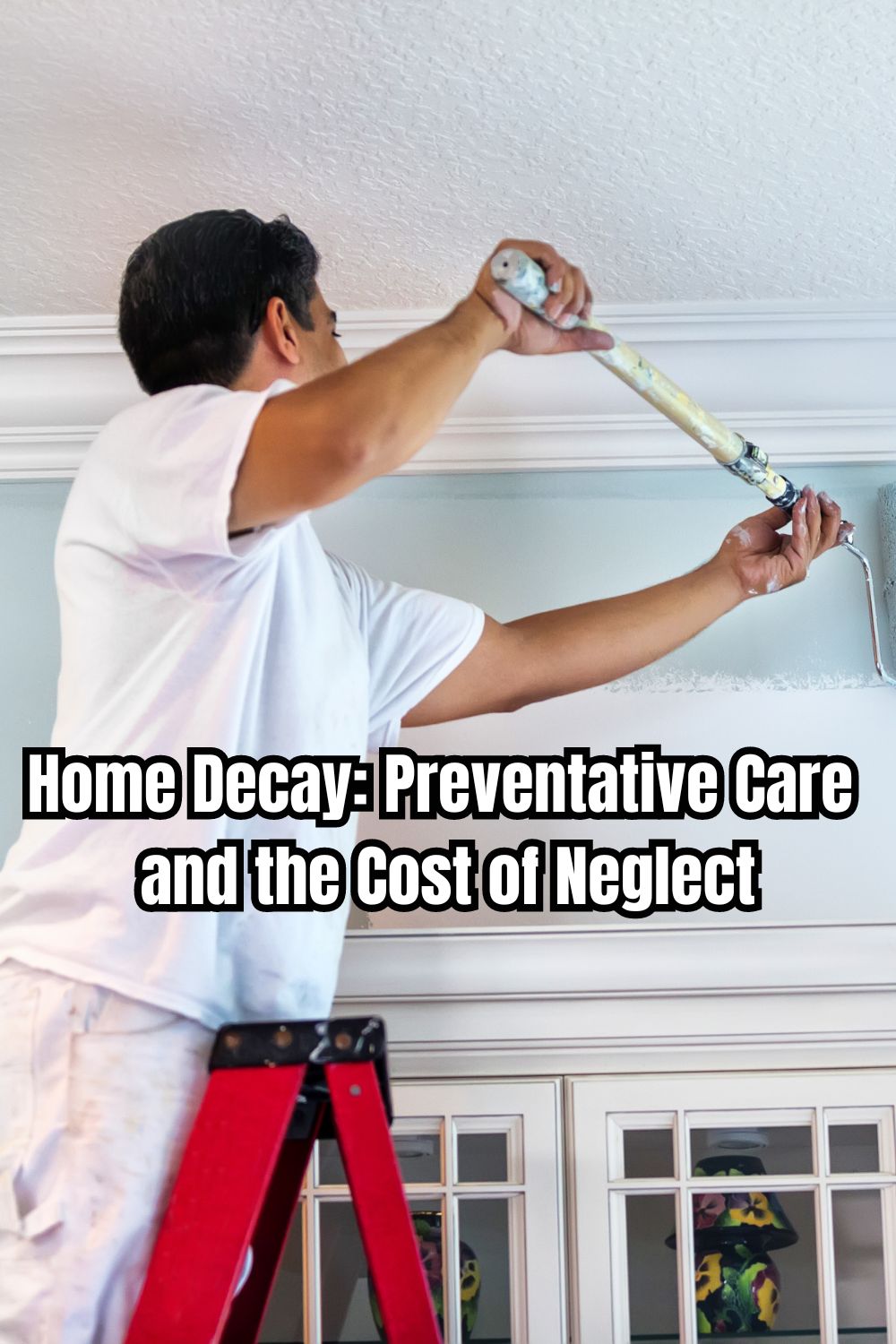It’s important to stay up to date with your home’s upkeep. Find out more info on Home decay and preventative care as well as the cost of neglect of your home.
Home Decay: Preventative Care and the Cost of Neglect
Owning a home is a big deal. It’s an exciting journey filled with dreams of stylish décor and modern upgrades. But let’s face it—behind every gorgeous living room is a whole lot of maintenance that keeps the foundation strong. Home decay is like the hidden villain in a good movie; you don’t see it coming until it’s done some serious damage. This post is your guide to staying on top of home care and understanding why it’s crucial to nip decay in the bud before it gobbles up your savings.
Understanding Home Decay
Home decay comes in many forms. Think of it like a pesky creature waiting to pop up: cracked walls, sagging roofs, hidden mold, and even sneaky pests. Your home battles weather, daily activities, and plain old times. Yes, aging signs will show up here and there, but the most severe damage? Totally avoidable with some TLC.
Proactive Home Care: Your First Line of Defence
- Regular Inspections: Imagine setting a date with your home once a year, checking it out from top to bottom. Pay extra attention to your Roof & Gutter because they’re crucial in keeping water damage at bay.
- Maintenance Log: This is your home’s dairy. Jot down every repair, replacement, and service, along with dates and costs. This will be your go-to record and can be a goldmine of info when it’s time to sell.
- Professional Assessment: DIY inspections are good, but let’s get real – sometimes you need a pro. Every few years, bring in an expert for a full check-up. They’ll spot things you might miss and give you top-notch advice on repairs and future-proofing.
Navigating Home Care Processes
- Prioritize Urgent Repairs: After your inspection, make a list. Start with issues that need immediate attention. Foundation cracks, leaks, and electrical hiccups? They should top that list because they can turn into monsters if ignored.
- Research and Hire Reputable Contractors: Personal recommendations, online reviews, and checked credentials are key. Make sure your contractors are properly licensed and insured to avoid any dodgy dealings or shabby work.
- Budgets and Estimates: Plan an annual maintenance budget. Gather detailed, written estimates from multiple contractors. If a price seems too good to be true, it probably is. Remember, quality has its cost.
- DIY with Caution: DIY projects can be fun and satisfying, but stay within your skill set. Simple things like caulking, painting, and minor patch-ups are great. Big jobs? Leave those to the experts unless you want a small issue turning into something bigger.
The High Cost of Neglect
Skipping regular maintenance can lead to problems that are way more than just annoying. Here’s why neglect will hit your wallet hard:
-
- Exponential Damage Growth: A tiny leak can lead to mold wood rot, and even weaken your home’s structure. What starts as a simple fix can spiral into wall or foundation overhaul.
- Health Hazards: Mold, mildew, and pests aren’t just gross—they’re dangerous. They bring health risks, meaning potential medical bills and a hit to your quality of life.
- Decreased Property Value: Homes showing signs of neglect drop in value. Buyers know they’ll need to sink money into fixes, meaning they’ll offer you less.
- Insurance Implications: Many insurance policies won’t cover damages from neglect, leaving to foot the entire bill. Plus, chronic issues can hike up your premiums over time.
In the end, staying proactive about home maintenance isn’t just another chore. It’s about protecting your investment, ensuring comfort, and maximizing your home’s value. A little effort now saves a ton of hassle and expense down the road. Remember, the small care acts you put into your home today will pay off big time, keeping it safe, cozy, and valuable for years to come!

Leave A Reply!